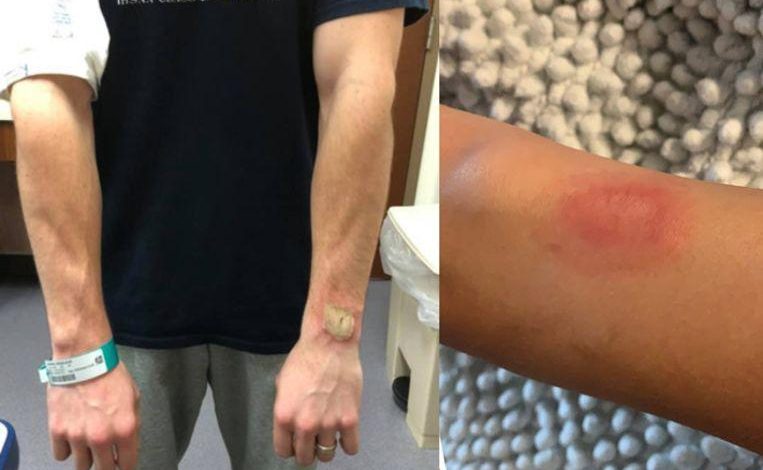Big burns due to Fitbit: is wearing a sports watch dangerous?

Last week it became clear that three people had suffered severe burns by wearing a Fitbit sports watch. Does it mean that wearing a smartwatch is dangerous? Or is this a matter of three incidents?
The smartwatch is growing in popularity. More than 53 million smartwatches were sold worldwide last year. It will probably be 74 million by the end of this year. Sports brand Fitbit, known for its sports watches, was taken over by Google for 2.1 billion last week, but immediately got negative news. Three customers were burned when wearing the sports watch. “It seemed to melt through my arm,” said Ethan Landers from Iowa. The 25-year-old Ellen from Merksem in Belgium and Elkan from the United States also suffered burns. “When I took off the Fitbit, my skin looked terrible where the green laser is. It hurt and it stung.”
Erik van Ballegooie, co-founder of Hardware Info and an avid user of fitness and smartwatches has never heard of similar incidents. “It can, of course, happen that things go wrong inside such a device. With smartphone batteries, things sometimes go wrong, although that is very rare. The watch could also become hot in theory, which can be painful.”
The latter may have happened to 25-year-old Ellen, although Van Ballegooie has doubts about the cause. “The ‘green laser’ Ellen is talking about is just a LED light. They can’t get so hot that they cause such burns. Something else went wrong there, although I don’t know what.” According to van Ballegooie, the watches are absolutely not dangerous, although in a very rare case it can go wrong, just like with other devices.
Irritation
Yet wearers of such sports watches do come across another problem. Wearing the device tightly around the wrist can irritate the skin beneath the gadget. Certainly, because you are supposed to wear a sports watch for 24 hours a day. Fitbit admits that the complaints with a ‘very limited percentage of customers’ do indeed occur. Van Ballegooie has clear advice for carriers who encounter irritation. “The irritation often starts when water comes between the skin and the watch, for example when showering. Give your skin a break by taking the watch off for five minutes and thoroughly drying yourself. This way you prevent nasty blister-like wounds.”
Van also advises not to wear the watch too tightly on the wrist. This can also become irritating after long wear. “The company indeed advises tightening the strap. This is indeed necessary to measure your heart rate, but the watch must still be able to move a little. If that is not possible, the strap is way too tight and that can also cause nasty wounds.”




